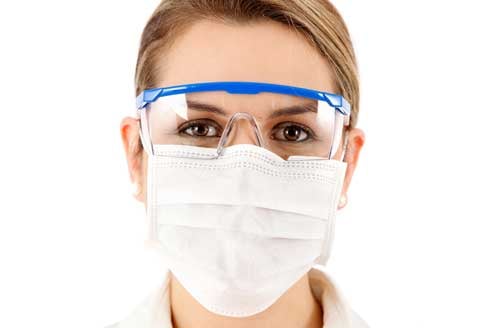
Early last month, I started penning a blog article relating to Covid-19. I modified it multiple times and finally scrapped the idea because it was too sensitive a topic, too important to cover in something as “casual” as a blog, and because the information was coming in and changing so fast that anything I wrote would be outdated by the time it was submitted. My, how a couple weeks can change the world…
Rather than try to explain or discuss a global pandemic, I think it would be more helpful to review basic infection control and what we know about prevention techniques that are more general and less specific to one disease or germ. The old saying about “an ounce of prevention being worth a pound of cure” is absolutely true when it comes to infection control. And prevention is much easier, much cheaper, and much more basic than treatment and cures. The precepts of Infection Control, Universal Precautions, and Standard Precautions applied to our everyday practices before Covid-19, and so far, it appears to be solid advice going forward as well.
“Universal Precautions” is a phrase that the Centers for Disease Control (CDC) began slinging around in the early 1980’s. The definition is slightly different depending on what resource you use to define it, but at its most general, it is “control guidelines designed to protect people (usually/often healthcare workers) from exposure to diseases spread by body fluids, such as blood and sputum.” Most commonly, it is referring to bloodborne pathogens. In fact, the timing in the 1980’s coincides with the rise of AIDS and HIV.
The general guidelines are predicated on the idea that all body fluids, all patients, all coughs, sneezes, and sniffles should be treated as infectious. You literally pretend that any patient you encounter has some infectious disease. Given that many patients carry infectious disease without exhibiting symptoms and are often unaware they are infectious or contagious, this is a responsible, sound practice to adopt. By the way, you can use the word “people” interchangeably with “patient” for purposes of our discussion. This concept is called universal precautions or sometimes referred to as standard precautions. While some sources talk about universal precautions referring specifically to bloodborne pathogens, it is sometimes expanded to include airborne pathogens.
The actual precautions are specifically for patient interaction when the chance of contact with body fluids is present. The precautions include:
- Hand Hygiene. Refer back to last month’s blog or the countless media pleas for everyone to wash their hands often and thoroughly.
- Use of Gloves. Use gloves when you encounter blood, secretions, body fluids of any kinds. Gloves don’t mean you can skip handwashing, by the way.
- Facial Protection. Masks, eye protection, etc. When you are working with patients with airborne diseases (tuberculosis, Covid-19), use a NIOSH approved mask. These are typically called “N 95 Masks” or TB Masks”. Pre Covid-19, OSHA required these were available for staff working with patients that had the potential for airborne disease. Obviously, with Covid-19, all bets are off. Follow the latest guidelines whenever possible. At the time of writing this article, many people are wearing these masks in public whenever they go out.
- Environmental Cleaning. In the durable medical equipment industry, this is generally referring to equipment cleaning and disinfecting surfaces where equipment is stored or transported. Use a good tuberculocidal disinfectant, and follow instructions for that specific disinfectant carefully. Clean the medical equipment, but also be sure to disinfect work stations, work benches, and the cargo bays in our vans and trucks after we haul DME equipment.
- Respiratory Hygiene/Cough Etiquette. Cover your mouth and nose when coughing or sneezing. Our new Covid-19 etiquette suggests coughing into the crook of your arm. Use tissues when coughing up sputum or sneezing or blowing your nose. Throw them away and wash your hands.
These precautions are very important every day and with every patient you encounter. I’d add to the list to pay attention to a good, scientific source for updates on how to specifically protect against Covid-19. Remember that Covid is a virus, and thus antibiotics have very little effect. Watch for updates to local law and regulation as well, with regards to commerce, keeping businesses open, and delivery. Follow the 6’ physical distance guidelines. That number is not arbitrary—it is a formal best practice suggestion by several very reputable medical sources.
As I write this article, I’m cognizant that pharmaceutical companies are working feverishly on treatments and cures for Covid-19, as well as vaccines to prevent it. Information will undoubtedly change and hopefully we’ll be able to write about this pandemic in the past tense very soon.


